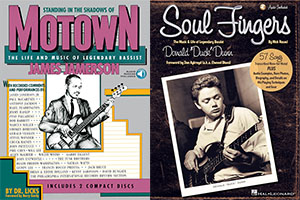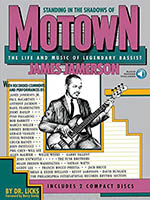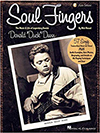Here’s how studying the groove pioneers will make you a better player
By Jon Liebman
January 20, 2023
The electric bass is over 70 years old already. It’s amazing when you think about how far the instrument has come since its earliest days with Monk Montgomery, especially when you consider all the incredible bass players we have today.
I was talking with Bob Lizik recently, longtime bassist with Beach Boys visionary Brian Wilson, for this week’s FBPO interview. When I asked Bob what advice he has for an old rocker who wants to learn bass, his very first suggestion was to take a look back at where it all started.
The groundwork is laid
“Listen to the classics,” Bob says. “Listen to Jamerson. Standing in the Shadows of Motown is a great book, especially for an older cat that probably grew up with a lot of that music. It’s a great learning experience.”
Bob also recommends listening to Duck Dunn, Jerry Jemmott, and all the other bass groove pioneers, mostly from the ‘60s and ‘70s. “I would do that first,” he says.
The groundwork has already been laid and the role of the bass player is firmly established.
The bass player’s job is to set the foundation for the band, lock in with the drummer, and make the music feel good.
With that in mind, doesn’t it make sense to listen to the pioneers, the early innovators of the electric bass?
Go for the feel
“You don’t have to necessarily cop the lines perfectly,” Bob says, “but when you listen to it, it gives you an idea of where they’re at, the style, the style that they’re playing in.”
That’s so true. You don’t have to be James Jamerson in order to get good at playing a Motown groove. Listen to what he’s doing, cop the feel, and start simple. Sometimes just playing one or two notes per bar can create a great groove and a great feel.
The legacies endure
Today’s players too, whether they realize it or not, can trace their lineage back to the early bass groovers, even if they’ve branched into other styles. There are plenty of ways you can benefit from those players too, according to Bob.
The most obvious ways are listening to recordings and, nowadays, watching YouTube videos. While that’s all great, Bob suggests taking it even further.
“Go see live music,” he says. “Go out and see players and watch somebody play. Listen to their tone, see what they’re playing, what instrument they’re playing, what they’re playing through.”
Bob also suggests going up to the players you admire, whenever possible, asking them for tips. Not everyone is approachable, but some people are, so take a chance. What have you got to lose?
The more you learn to appreciate the historical perspective of the bass, the better you’ll understand the end goal of why we do what we do and how to truly make the music feel good.
Next steps
Do your homework. Listen to those who blazed the trail for the rest of us. Study what they did and strive, more than anything else, to capture the feel of the groove. Then work on applying that feel to your bass playing.
See what other names you can add to the list. Feel free to include players from any generation. Here, I’ll give you a head start: Larry Graham, Stanley Clarke, Marcus Miller, Rocco Prestia… You get the idea.
Come up with your list, do some serious listening, and let me know how it goes. Leave a comment below and share your experience.
For more thoughts on the subject, and great bass stuff, watch my complete interview with Bob here.
Standing in the Shadows of Motown and Soul Fingers are available in the FBPO store.
Standing in the Shadows of Motown








“Soul Fingers” is an absolute treasure…. so grateful to Nick Rosaci for the huge amount of work to put it all together. Duck Dunn is my model: create a tasteful, melodic bass line that is only what the song needs. Repeat. Job done.
Thanks, Grayden. I couldn’t have said it any better!